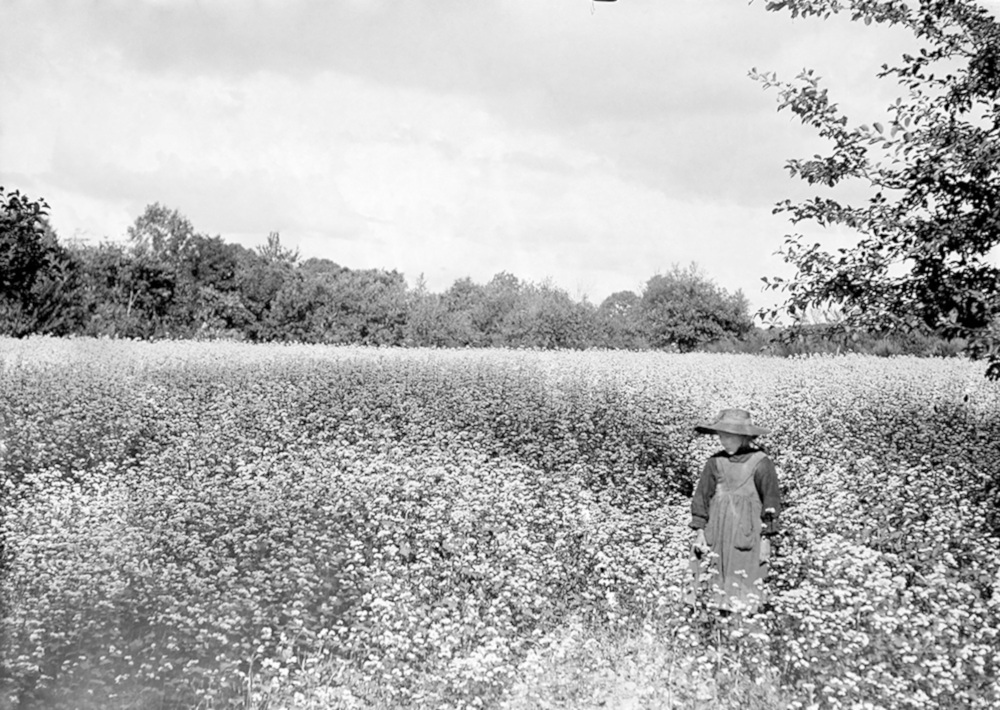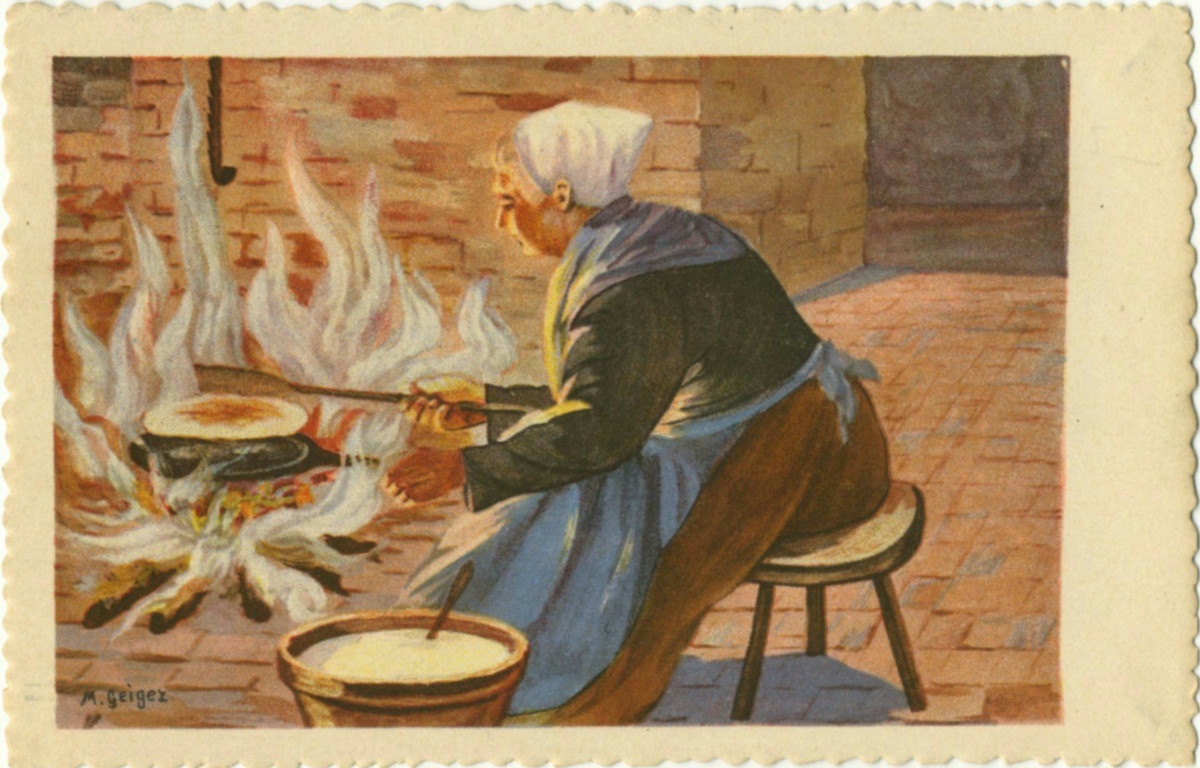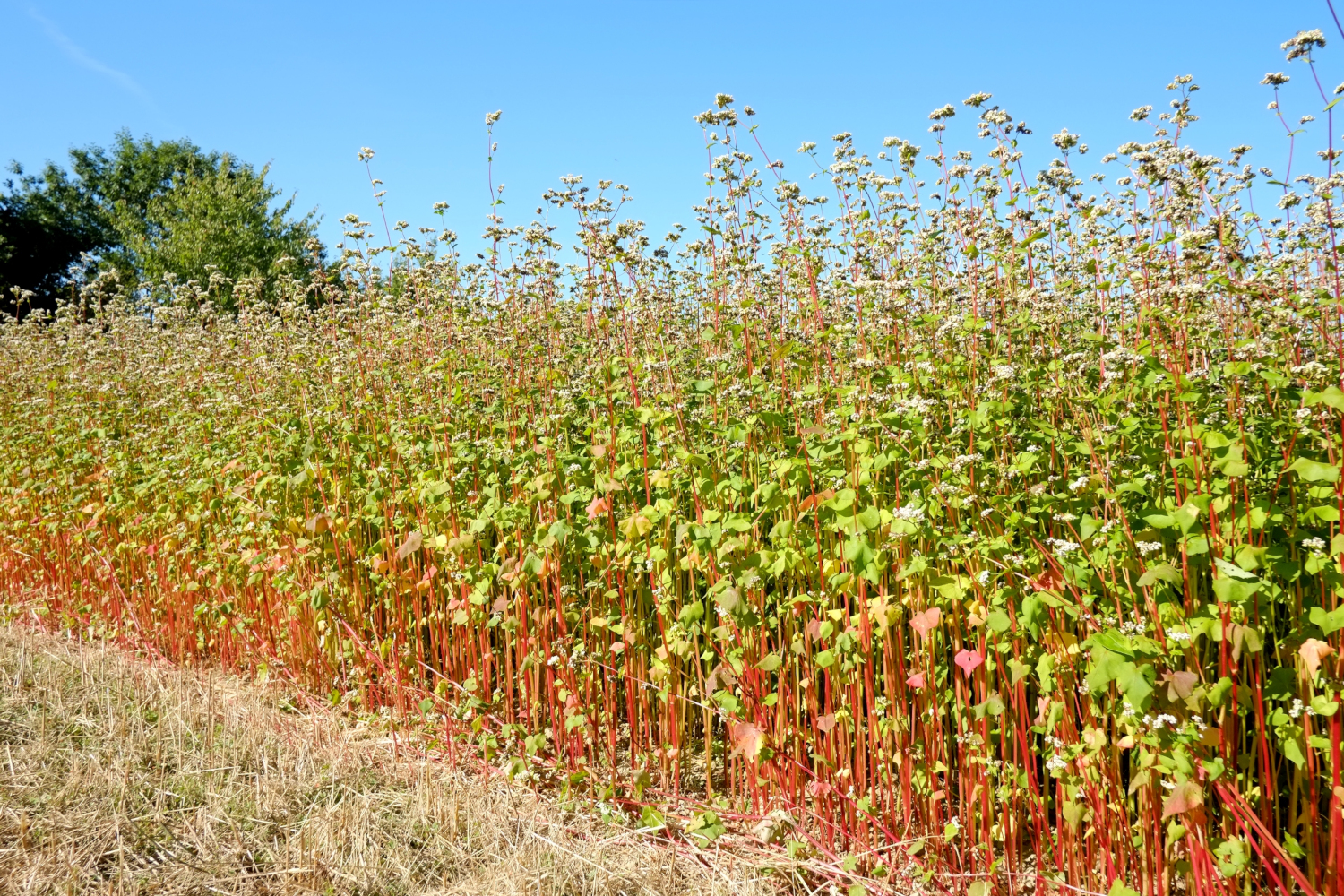Firstly, to believe that a sovereign in the 16th century, regardless of the power they held, would be able to decree the cultivation of a specific plant is to misunderstand the role of the State at the start of the modern era. Secondly, buckwheat was already present in Brittany before the 16th century. Indeed, archaeobotanists have found seeds dating back to the Xth century and even pollen originating from the Bronze Age.
The story of a crop.
Nonetheless, there is an essential difference between the natural presence of a plant in a particular area and the actual cultivation of that same plant. Indeed, buckwheat was established in the Armorican peninsula around the 15th/16th century. In Europe, the oldest traces of the plant are found in records dating back to the end of the 14th century in what are now known as Poland, Latvia, and the Czech Republic. In Brittany it was first mentioned in 1497, in Rennes and was recorded in 1502 at Saint-Brice-en-Coglès, a small village between Antrain and Fougères. It was also found in 1508 in Langouët, between Rennes and Dinan,and subsequently two years later in the Quimper area.
 This information leads us to believe that buckwheat in Brittany started out in the east of and spread to the west. However, it is almost certain that some seaports contributed to the extensive spread of buckwheat, particularly those trading with the towns confederated under the Hanseatic League. Thus, it was only during the late Middle Ages that buckwheat was established in the Bretons diet. It is also essential to underscore that the plant’s arrival in Brittany is in no way related to the crusades or is from Northern Africa, as has been falsely argued in the past. On the contrary the plant originated from China.
This information leads us to believe that buckwheat in Brittany started out in the east of and spread to the west. However, it is almost certain that some seaports contributed to the extensive spread of buckwheat, particularly those trading with the towns confederated under the Hanseatic League. Thus, it was only during the late Middle Ages that buckwheat was established in the Bretons diet. It is also essential to underscore that the plant’s arrival in Brittany is in no way related to the crusades or is from Northern Africa, as has been falsely argued in the past. On the contrary the plant originated from China.
A buckwheat Brittany?
Moreover, to debunk this misconception, it is essential to reiterate that the cultivation of buckwheat in France is not specific to Brittany. Evidence of the crop appears in many other regions, including Lozère, Auvergne, Limousin, Savoie, Champagne, Sologne, Morvan, Mayenne or even Normandie! However, the Armorican peninsula demonstrates a natural bond with this plant in that the land tenure system revolves, to an extent, around buckwheat. For instance, the other side of the Couesnon river « good land » is solely attributed to plots that offer a high wheat yield. Those lands were the most actively sought after and the most expensive. However, in Brittany, the estimate given to such lands is more flexible where a wide range of crops are grown, such as common wheat, rye, oats, or buckwheat, demonstrating the importance of the latter in the lives of Bretons.
 Moreover, assimilating the whole Armorican peninsula as a place of “buckwheat culture” oversimplifies the issue. Indeed, this crop is unevenly distributed in Brittany. For example, buckwheat is virtually absent from the Gulf of Morbihan and the Loire estuary. However, buckwheat is very common in Central Brittany and Ille-et-Vilaine, as up to 40% of the ploughed land consisted of buckwheat, according to the 1866 agricultural survey. To a similar extent, the decline of the crop during the 19th century occurred at different rates according to the areas. During the inter-war period, buckwheat still represented just under 30% of the arable land in the Côtes-du-Nord. In Ille-et-Vilaine, the cultivation of buckwheat was approximately the same in 1820 as in 1899. It was not until 1955 and the “Trente Glorieuses” (‘The Glorious Thirty Years) that the areas devoted to the plant fell below the 10,000-hectare threshold.
Moreover, assimilating the whole Armorican peninsula as a place of “buckwheat culture” oversimplifies the issue. Indeed, this crop is unevenly distributed in Brittany. For example, buckwheat is virtually absent from the Gulf of Morbihan and the Loire estuary. However, buckwheat is very common in Central Brittany and Ille-et-Vilaine, as up to 40% of the ploughed land consisted of buckwheat, according to the 1866 agricultural survey. To a similar extent, the decline of the crop during the 19th century occurred at different rates according to the areas. During the inter-war period, buckwheat still represented just under 30% of the arable land in the Côtes-du-Nord. In Ille-et-Vilaine, the cultivation of buckwheat was approximately the same in 1820 as in 1899. It was not until 1955 and the “Trente Glorieuses” (‘The Glorious Thirty Years) that the areas devoted to the plant fell below the 10,000-hectare threshold.
A bulwark against starvation?
Buckwheat is a crop that became established in Brittany with ease as it is a low-demanding plant; it requires little maintenance; it is rather generous in terms of its seed-to-yield ratio (although historical records may not allow us to quantify this accurately); and finally, it may also be used for multiple purposes. The plant is also preserved relatively well as it is not affected by any of the diseases affecting cereals, including the notorious ergot fungus, Claviceps purpurea.
 Finally, it takes no more than three months to mature, allowing many crop rotation combinations. Depending on the weather conditions, the farmer may choose to sow relatively early, before 15 May, or later, after 15 June. This flexibility allows for gathering a first harvest that would have otherwise been lost to frost or hail. In other words, buckwheat is a replacement crop that makes up for the failure of a wheat crop. However, it is incorrect to set buckwheat as a Breton bulwark against food shortages and wheat famines. Indeed, the plant does not guarantee security as such, but it is instead the mixed farming practices and the diversity in farming that primarily is beneficial to the Bretons.
Finally, it takes no more than three months to mature, allowing many crop rotation combinations. Depending on the weather conditions, the farmer may choose to sow relatively early, before 15 May, or later, after 15 June. This flexibility allows for gathering a first harvest that would have otherwise been lost to frost or hail. In other words, buckwheat is a replacement crop that makes up for the failure of a wheat crop. However, it is incorrect to set buckwheat as a Breton bulwark against food shortages and wheat famines. Indeed, the plant does not guarantee security as such, but it is instead the mixed farming practices and the diversity in farming that primarily is beneficial to the Bretons.




